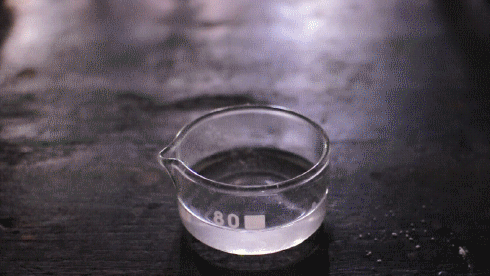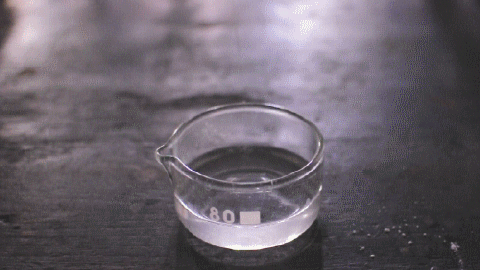This is my STEM-related tumblr blog. Feel free to browse through it, and be amazed by what we could contribute in the Science, Technology, Engineering and Mathematics world, especially us girls.
Don't wanna be here? Send us removal request.
Text



It's more about the circles and ellipses, the parabolas and hyperbolas. Pre-calculus is fascinating for me— STEM is fascinating. Studying during these trying times is hard, without the traditional go-to and learning in school. However what drives me into pursuing despite all the hardships, are my goals. STEM will put me in the right place.
People tend to say that STEM is hard, but you know what? So is life. Nothing's ever easy when it comes to fulfilling your dreams. After all, the most delicious food takes the longest cooking time. Waiting and struggling is just a small price to pay for the success that you'll be able to savor at the end.
Don't hesitate to pick a path just because you think you're incapable of it. Strive to slay the course, and you'll see yourself thrive.
0 notes
Photo

Launch of the ESA/NASA Solar Orbiter via NASA https://ift.tt/2vmPwE5
3K notes
·
View notes
Photo

01101000 01101001 Hello, F3ll0w hUm@n
follow me on instagram!
4K notes
·
View notes
Link
“I have experienced first-hand how an impressionable child can grow to love science and engineering by simply being exposed to it. I believe that encouragement to pursue these careers from family and other institutions go a long way, and so does awareness of one’s capabilities and potential,” adds Santiago-Bond.
0 notes
Photo
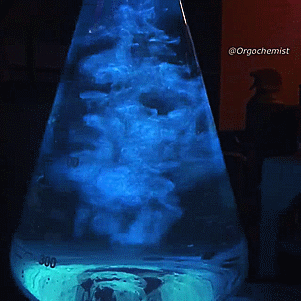


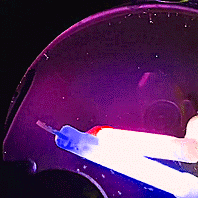




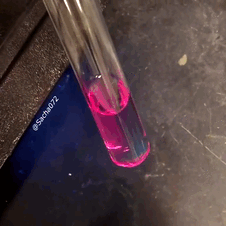

Glow in the Dark Science Stimboard for Anon
x x x - x x x - x x x
262 notes
·
View notes
Text
Neuroscientists discover new structure of important protein in the brain
A novel structure of a so-called ‘neurotransmitter: sodium symporter’ has been mapped at the University of Copenhagen. The discovery adds to the researchers’ knowledge of neurotransmitters in the brain and may lead to better drugs for, among others, ADHD, depression and epilepsy.
After five years of experimentation, researchers from the University of Copenhagen have succeeded in crystallising and mapping a novel conformation of LeuT, a bacterial protein that belongs to the same family of proteins as the brain’s so-called neurotransmitter transporters.
These transporters are special proteins that sit in the cell membrane. As a kind of vacuum cleaner, they reuptake some of the neurotransmitters that nerve cells release when sending a signal to one another.
Some drugs or substances work by blocking the transporters, increasing the amount of certain neurotransmitters outside the nerve cells. For example, antidepressants inhibit the reuptake of the neurotransmitter serotonin, while a narcotic such as cocaine inhibits the reuptake of the neurotransmitter dopamine.
‘Transporters are extremely important for regulating the signalling between neurons in the brain and thus the balance of how the whole system works. You cannot do without them’, says Kamil Gotfryd, first author and Associate Professor at the Department of Biomedical Sciences who, during the study, was a postdoc at the Department of Neuroscience.
‘Not only does the new discovery give us additional basic scientific knowledge about the complex transporter proteins. It also has perspectives in relation to developing pharmacological methods, with which we can change the function of transporters. In other words, the discovery may lead to better drugs’, he adds.
From bacteria to human brains
Evolutionary, transporters derive from the most primitive bacteria, which have developed them to absorb nutrients, such as amino acids, from the environment in order to survive.
Since then, specialised transporters have developed to perform a variety of functions. For example, to transport neurotransmitters into neurons in the human brain. Still, the basic principle is the same, namely that the transporter functions by alternately opening and closing to the interior and exterior of a cell, respectively.
When a transporter is open outwardly, it may capture transmitter substances or amino acids. Thereafter, the protein uses sodium ions to change its structure so that it will close outwardly and instead open to the interior of the cell where the transported substance is released and absorbed.
Full cycle
In recent years, X-ray crystallography has enabled researchers to map three stages of the transporter mechanism: Outwardly open, outwardly occluded and inwardly open.
In order for the cycle to be complete, researchers have long concluded that there must also be an inwardly occluded stage of the protein. However, since this structure is unstable, it has long been difficult to freeze it and thus be able to map it.
But now, after many trials, researchers at the University of Copenhagen have succeeded in retaining a transporter for the transmitter leucine – a LeuT - in precisely that stage.
‘We have been working on this for five years, and no matter what we did, we never got the structure we wanted. But suddenly it happened’, says Professor and Head of Department Ulrik Gether of the Department of Neuroscience.
‘Our study is in fact – I would say – ‘the missing link’. This structure has been missing and it has been important to understand the entire cycle which the transporter is going through’, he adds.
A key to more discoveries
Ulrik Gether explains that the key to solving the long-standing mystery was partly a mutation of the transporter and partly a replacement of the substance leucine by the related, but slightly larger phenylalanine molecule.
The combination, so to say, held the transporter long enough in the desired position for researchers to purify, crystallize, and map its structure.
At the same time, Ulrik Gether explains that the high degree of similarity between different types of transporters allows researchers to draw parallels to the transporters of a wide range of other neurotransmitters.
‘Now that we know more about LeuT, the result may be transferred to other transporters of other neurotransmitters. We believe that we can generalise and create better models for, in example, dopamine, serotonin and GABA transporters which are targets for drugs to treat ADHD, depression and epilepsy, respectively’, says Ulrik Gether.
According to the Head of the Department, the next step is to continue working with the transporters found in human nerve cells.
368 notes
·
View notes
Video
youtube
This video is for the aspiring civil engineers out there like me!
0 notes
Photo




A Variety of Graphs from “Why So Few? Women in Science, Technology, Engineering and Mathematics” by Christi Corbett (CLICK ON PERMALINK TO SEE ALL GRAPHS and INDIVIDUAL IMAGES TO VIEW CLOSE UP GRAPHIC).
These from Corbett’s report on why there are so few women in in STEM fields reveal that there is an overall disparity in females that major in and pursue careers in engineering and computer science fields versus males, though the trend seems to be getting better.
Figure 6 reveals that women, while lacking in the bachelors degrees of STEM fields in the 1960’s, are steadily making increases to their presence in these fields, especially in the biological and life sciences. However, in fields such as engineering, they are still presently only 20% of the population, and in computer science they have actually decreased their presence (Corbett, Figure 6). This relates to several other sources that I gathered, such as anecdotal evidence from SA4 interviews about there not being as many women in engineering as men, the graph of college major choice by Dickson (these are very similar), and what Roca Costa said in her interview with NPR about women feeling alone in engineering courses in college.
Figure 11 reveals reveals roughly the same trends as Figure 6, except this time in terms of STEM careers. It seems that even less women than before actually end up pursing jobs in these fields, even if they received degrees in them (Corbett, Figure 11).
Figure 4 is a graph revealing the advanced scores on AP tests in math and science subjects by gender in 2009. I thought that this was really interesting because it shows that girls are not performing as well as boys in standardized tests in the science fields, (except for computer science, which is interesting because there is actually a decrease in women in that field) (Corbett, Figure 4). However, this reminded me of what Debbie Sterling said in her Ted Talk (link HERE) about how “there was a study done very recently around 65 countries around the world where they tested boys and girls on the same science test. Around the world, girls outperformed the boys, but not in the US. What this study suggests is that it’s not a biological thing, this is a cultural thing” (Sterling).
Figure 12a.shows workers with doctorates in computer science fields by gender and employment status. This graph not only shows that there are far greater amounts of men than women getting doctorates in the computer science field (Corbett, Figure 12a.). This relates back to what Debbie Sterling said in her TED talk (link HERE) (Sterling) and what Roca Castro said (link HERE) (Roca Castro) in her NPR interview about women just not fitting in in these fields due to the fact that they are usually the minority gender in these fields.
Overall, these graphs are very helpful as they give concrete, quantitative evidence regarding the topic that I am studying.
Since I am thinking of doing a audio file for my major project 2, I cannot actually use these graphs directly in my project. However, I will likely use my own voice to vocalize what these graphs say and utilize them in that way in order to bring concrete statistical evidence to my project. For example, if I wished to use information from figure six, I would narrate “Based on a report by Christi Corbett, in 2006 59% of biological and agricultural sciences degrees were awarded to women, whereas only 20.5% of computer science degrees were awarded to women in that same year.”
5 notes
·
View notes
Video
youtube
Keri Bean (tw: @PlanetaryKeri) is a systems engineer at NASA’s Jet Propulsion Laboratory in Pasadena, California. She is the deputy lead Rover Planner (aka Mars rover driver) on the Curiosity Mars rover and is a Helicopter Integration Engineer for the Mars 2020 mission. She got her bachelor’s and master’s degrees at Texas A&M University in meteorology, with her focus on studying the weather on Mars. Her hobbies mostly center around Star Wars, as she is an active member of the R2-D2 Builder’s Club with her very own Astromech and cosplays with the Rebel Legion.
In our conversation, we talk about Mars Rovers, Star Wars, and cake decorating.
Watch this episode on YouTube. Listen to it on Spotify, Stitcher, Apple Podcasts, Google Podcasts, Breaker, Castbox, Overcast, Pocket Casts, RadioPublic, or RSS.
Show Notes
[00:37] Keri’s pursuit of meteorology. [01:50] Astronomy as a potential path. [02:12] Possible career paths in space. [02:44] Her introduction to Space Weather [03:35] Keri’s first experiences with the rover missions. [03:54] Spirit and Opportunity Rovers. [04:51] Phoenix Mars Lander. [05:54] Applying her meteorology studies to her rover mission experiences. [06:33] Curiosity Rover. [06:50] Keri’s path to JPL. [08:58] Dawn Mission. [09:55] Filling the gaps in knowledge between her meteorology background and her work. [10:36] Test beds. [11:44] Building her own R2-D2. [14:28] On becoming a Rover Planner. [16:03] The process for certifying to be a Rover Planner. [18:42] Certifying for individual Rovers. [19:10] Her role as a Helicopter Integration Engineer on the Perseverance Rover drone, Ingenuity. [20:11] Earth-side duplicate and testing of the drone. [21:39] A day in the life of Keri. [22:56] Working remotely. [26:22] Coming up next for Curiosity and Perseverance. [26:34] Curiosity: Wet Chemistry Experiment. [27:28] Perseverance: Landing Day. [27:59] Preparations for Landing Day. [29:03] Flight software transitions. [30:54] Handling the unexpected. [32:14] Bonus Question 1: What hobby or interest do you have that is most unrelated to your field of work? [34:07] Keri’s cosplay. [36:46] Porgs and PORGs. [40:27] Bonus Question 2: Which childhood book holds the strongest memories for you? [42:04] Bonus Question 3: What advice you would give someone who wants to do what you do? Or what advice should they ignore? [43:03] Exploring other topics if they are of interest. [43:21] Gaining astronomy experience with the HUBBLE [45:38] Reaching out to Keri.
Topics/Resources/People Mentioned
STS-114 Space Shuttle
Texas A&M
Texas A&M - Aggieland Saturday
NASA
Dr Mark Lemmon
Spirit and Opportunity Rovers (NASA Mission Overview) (wiki)
Phoenix Mars Lander (NASA Mission Overview) (wiki
Curiosity Rover (NASA Mission Overview) (wiki)
Jet Propulsion Laboratory
Sol (day on Mars)
Dawn Mission (NASA Mission Overview) (wiki)
R2-D2
Perseverance Rover (NASA) (wiki
Mars Helicopter Ingenuity (wiki)
Mount Sharp
Rebel Legion (main) (wiki)
Porg (Star Wars.com) (Star Wars fandom wiki)
Johnson Space Centre (NASA) (wiki)
Practical Operational Readiness Gambits (PORGs) (to be presented at the 2021 IEEE Aerospace Conference)
The Lord of the Rings by J. R. R. Tolkein (Book Depository)
The Lord of the Rings (films)
The Hubble Space Telescope (NASA) (wiki)
Variable stars
Additional Resources
Space Weather (wiki)
Mars Rover Takes Baby Steps (Spirit and Opportunity) (NASA) - refers to preparation and thread tests
NASA Perseverance rover undergoes next round of trials before Mars mission (Space Connect)
Sols 2878-2879: Opening Night (NASA daily mission blog) - the TMAH experiment
Sols 2880-2882: MSL’s SAM TMAH A-Okay! (NASA daily mission blog) - more about the TMAH experiment
Recovery of Fatty Acids from Mineralogic Mars Analogs by TMAH Thermochemolysis for the Sample Analysis at Mars Wet Chemistry Experiment on the Curiosity Rover, Williams A. J., Eigenbrode, J., Floyd, M., et al (2019). Astrobiology, 19(4): 522–546.
Connect with Keri
Website: http://www.keribean.com Twitter: @PlanetaryKeri Instagram: @PlanetaryKeri
Follow STEAM Powered
YouTube Facebook Instagram Twitter Patreon Ko-Fi
4 notes
·
View notes
Photo

Wonder if you have imposter syndrome? Check out the signs and ways you can prevent this negative mindset from wrecking your grades.
https://engineeringwithstyle.com/imposter-syndrome-and-engineering-students/
21 notes
·
View notes
Link
Solving systems of equations for equilibrium equations can be time consuming. If you know how to use some linear algebra with your graphing calculator is can be much easier. Learn how in this tutorial…
8 notes
·
View notes
Photo




party kid oh sehun forgot how to get off the cart
2K notes
·
View notes


